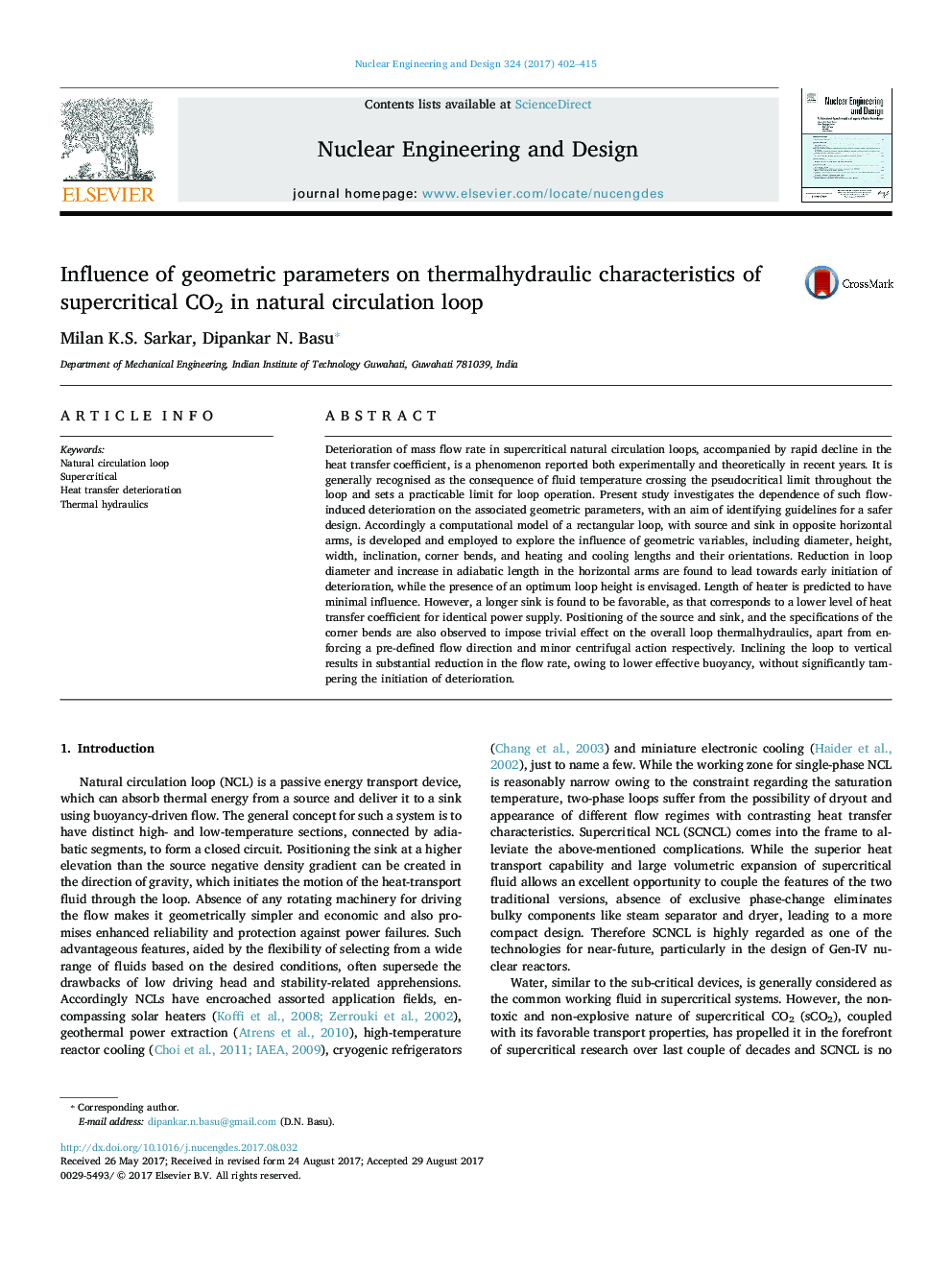| کد مقاله | کد نشریه | سال انتشار | مقاله انگلیسی | نسخه تمام متن |
|---|---|---|---|---|
| 4925384 | 1431397 | 2017 | 14 صفحه PDF | دانلود رایگان |
عنوان انگلیسی مقاله ISI
Influence of geometric parameters on thermalhydraulic characteristics of supercritical CO2 in natural circulation loop
دانلود مقاله + سفارش ترجمه
دانلود مقاله ISI انگلیسی
رایگان برای ایرانیان
کلمات کلیدی
موضوعات مرتبط
مهندسی و علوم پایه
مهندسی انرژی
مهندسی انرژی و فناوری های برق
پیش نمایش صفحه اول مقاله

چکیده انگلیسی
Deterioration of mass flow rate in supercritical natural circulation loops, accompanied by rapid decline in the heat transfer coefficient, is a phenomenon reported both experimentally and theoretically in recent years. It is generally recognised as the consequence of fluid temperature crossing the pseudocritical limit throughout the loop and sets a practicable limit for loop operation. Present study investigates the dependence of such flow-induced deterioration on the associated geometric parameters, with an aim of identifying guidelines for a safer design. Accordingly a computational model of a rectangular loop, with source and sink in opposite horizontal arms, is developed and employed to explore the influence of geometric variables, including diameter, height, width, inclination, corner bends, and heating and cooling lengths and their orientations. Reduction in loop diameter and increase in adiabatic length in the horizontal arms are found to lead towards early initiation of deterioration, while the presence of an optimum loop height is envisaged. Length of heater is predicted to have minimal influence. However, a longer sink is found to be favorable, as that corresponds to a lower level of heat transfer coefficient for identical power supply. Positioning of the source and sink, and the specifications of the corner bends are also observed to impose trivial effect on the overall loop thermalhydraulics, apart from enforcing a pre-defined flow direction and minor centrifugal action respectively. Inclining the loop to vertical results in substantial reduction in the flow rate, owing to lower effective buoyancy, without significantly tampering the initiation of deterioration.
ناشر
Database: Elsevier - ScienceDirect (ساینس دایرکت)
Journal: Nuclear Engineering and Design - Volume 324, 1 December 2017, Pages 402-415
Journal: Nuclear Engineering and Design - Volume 324, 1 December 2017, Pages 402-415
نویسندگان
Milan K.S. Sarkar, Dipankar N. Basu,